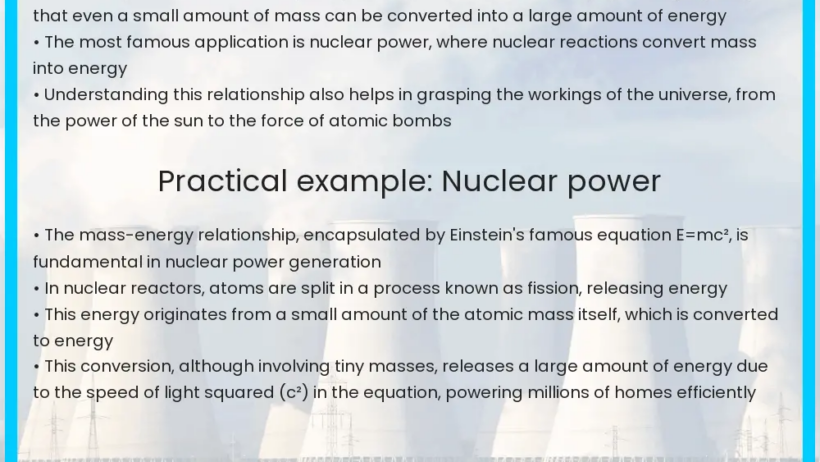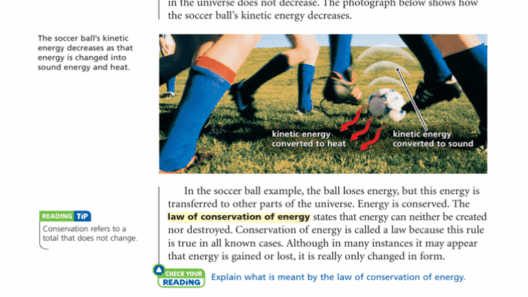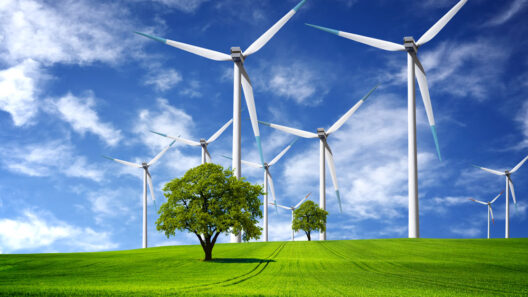When considering the delicate interplay between mass and energy within natural processes, one compelling phenomenon stands out: the evaporation of water. This transformation, so commonplace yet often overlooked, presents a fascinating narrative of conservation principles. Through examining the mass-energy relationship during this phase change, we garner insight into the intricate mechanics of our world.
Evaporation occurs when liquid water transitions into vapor. It is a striking example of how energy is absorbed in a system, leading to a change in physical states while adhering to the inviolable laws of physics—specifically, the law of conservation of mass and energy. As we delve deeper, we will explore the intricacies of these principles at play, elucidating how mass and energy are conserved during this most familiar yet scientifically profound event.
Understanding the implications of mass-energy equivalence is essential when exploring evaporation’s transformative impact. In essence, the equation E=mc², attributed to Einstein, elucidates that mass and energy are interchangeable. This foundational concept acts as a guiding light in deciphering the complexities that govern phase changes such as evaporation.
Phase Changes: The Science Behind the Transition
Water molecules exist in arrays governed by intermolecular forces. In liquid form, these molecules are closely packed, yet they possess the kinetic energy necessary for motion—essentially vibrating and colliding with one another. As the temperature rises, each molecule begins to absorb energy. This increase in kinetic energy ultimately leads to a remarkable transition; some molecules gain sufficient energy to overcome the hydrogen bonds that tether them to the liquid state.
During evaporation, molecules at the surface of the liquid are most likely to escape into the air as vapor. This transition exemplifies energy absorption without a corresponding loss in mass. Even as the water seemingly diminishes from our perspective, a meticulous balance is retained. The mass of the water molecules that have evaporated simply exists in a different, albeit less visible, form: water vapor.
Energy Exchange: The Driving Force of Evaporation
The energy absorbed during the process of evaporation is referred to as latent heat. This energy does not increase the temperature of the liquid; instead, it facilitates the molecular transitions necessary to shift from one phase to another. The latent heat of vaporization exemplifies one of nature’s remarkable efficiencies: it allows the continued cycling of water through different states while conserving the essential masses involved.
As heat enters the water, its vibrational dynamics accelerate, compelling molecules to break free. This is where the elegance of phase change science reveals itself. Rather than merely seeing lost mass, we migrate towards a more comprehensive understanding—embracing the notion that energy is conserved within the system. The vapor produced is still a manifestation of the original mass, simply transformed into a less tangible form.
Understanding Evaporation in a Broader Context
To appreciate the beauty of evaporation and the mass-energy relationship, we must also examine the larger environmental implications. Evaporation is vital in the Earth’s hydrological cycle, playing an integral role in processes ranging from weather patterns to ecological health. When water vapor ascends into the atmosphere, it cools, condensing into clouds, and eventually precipitating back to the earth in the form of rain or snow—completing a circuit of energy and mass conservation.
This cyclical phenomenon illustrates the fundamental principle that energy is neither created nor destroyed; it merely transforms from one form to another. The allure of evaporation lies not only in its simplicity but also in its complexity. Each droplet that vaporizes contributes to an expansive, interconnected system pulsing with life and energy.
The Matter of Conservation: An Intrinsic Balance
The question often arises: if a drop of water minimises into vapor, where does the mass go? One must recognize that, during the evaporation process, the circulation of air plays a crucial role in mass transfer. The evaporated particles disperse into the atmosphere, maintaining a dynamic equilibrium where the total mass remains constant. This phenomenon substantiates the principle of conservation of mass. The particles that have recently entered the gaseous state still orbit within the ecosystem and can rejoin the liquid realm through processes like condensation.
Additionally, energy loss occurs from the remaining water molecules as they transition into vapor. This loss leads to a drop in temperature of the liquid, imparting a cooling effect that one might feel while standing near a body of water. Therefore, in this elegant interplay of warming and cooling, we bear witness to the interconnectedness of our environment—energy inevitably transferred while the total mass remains unchanged.
Conclusion: The Aesthetic of Change
As we unravel the narrative of mass and energy conservation during water evaporation, we are left with a vivid understanding of our planet’s elegance. Each transition tells a story about the resilience and cyclical patterns that govern our environment. This beautiful dance of molecules, amid the fundamental laws of physics, serves as a reminder of the larger truths that underscore life itself.
Water’s journey from liquid to vapor encapsulates the essence of persistence—both in the preservation of mass and energy. Embracing the intricacies of these transformations not only highlights the wonders of science but also invites us to foster a deeper appreciation for the natural world around us. The conservation of mass and energy is not simply a principle; it is the very foundation of existence that sustains life on Earth.








